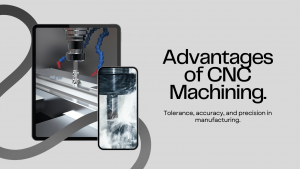Tolerance, accuracy, and precision are three fundamental concepts as far as product design is concerned, and they all contribute to the functionality and quality of a product. The tolerance is the maximum allowable variation in dimensions or specifications of a product, while the accuracy is whether the actual measurements match with the aimed values. However, the other term, precision, is made up of the degree of consistency and reproducibility in reaching exact measurements.
These are the ideas that are interlinked and which have a significant influence on the final product. The tolerance of a product implies the range of variation, which is allowed, accuracy guarantees that the product fulfills the set specifications, and precision ensures that the product can be reproduced uniformly. By grasping and differentiating these principles rightly, designers will be able to make products that will not only satisfy their clients but also meet industry standards.
Understanding the Differences between Tolerance, Accuracy, and Precision
Tolerance, accuracy, and precision are already used interchangeably; however, they have different meanings in product design. The tolerance is the parts of the dimensions or specifications that is permitted to vary. For instance, if the product specifications require a tolerance of ±0.1 mm for a certain dimension, it implies that the real dimension can be within this range without causing any functional issues for the product.
Precision refers to the ability to obtain the actual values rather than the intended ones. It is a way of ascertaining whether a product meets its expected design or not. As an example, a product with a length of 100mm that measures 99.9 mm can be considered a highly accurate one.
As opposed to that, precision is the level of repeatability and reliability of the results when measuring some parameters. It is the ability to produce a product in the same way with exact same results. A product with great precision will have a very low chance of any variation in its measurements when it is produced repeatedly.

Importance of Tolerance, Accuracy, and Precision in Product Design
Tolerance, accuracy, and precision have unquestionable significance in designing a good product for which performance depends. With the tolerance, the product can meet the general specification requirement even if there are small variations in dimensions. It creates the ability to follow the manufacturing process some while the overall functionality target is still met.
Precision is a critical aspect that helps to meet client needs as well as the requirements of the industry. A gain that is precise in measuring will work as it is intended, and it will satisfy the desired standards. This becomes even more of an issue when considering industries such as aerospace, automotive, and medicine, where safety and performance become vital matters of precision and accuracy.
Precision is crucial to guarantee that there will be no variations in manufacturing and, that the process will be repeatable. Producing a very precise product along with a wider range of duplication options allows the quality to be more constant and customers’ satisfaction to grow. Due to this modern technology phenomenon, the role and traditional functions of marketers, advertising agencies, and even politicians are being disrupted. Marketers and governments now can share their views and information directly with consumers through social media, increasing their influence on policymaking. It simultaneously assists in diminishing waste and achieving efficiency in production. From learners to teaching methods, technology has had an indelible impact on education.
Techniques for Achieving Tolerance, Accuracy, and Precision in Product Design
A crucial challenge for the manufacturer in as the area is the incorporation of various techniques and methodologies, which will guarantee tolerance, accuracy, and precision. Among the favorite techniques is statistical process control (SPC), which means tracking and controlling the processes of production in order to make sure they stick to the boundaries that are considered as acceptable. SPC uses statistical tools to isolate the variations and make applicable corrections to ensure that the accuracy and precision remain uncompromised.
The next approach is the use of CAD software, which has the capability of creating digital models as desired as the designer uses the software. Through the use of CAD software, designers can give the documented tolerances correctly with precision, which, in the end, ensures that the final product complies with the defined specifications.
For example, in industries such as automotive and aviation, CMMs and other advanced measurement technologies are applied to achieve the necessary levels of accuracy and precision. Such machines have a probe that is able to measure the dimension of the product at a high precision as well as the quality control process.
Technology, in the first place, has really revolutionized product design possibilities; achieving tolerance, accuracy, and precision has become a reality now. Modern production processes, materials, and measurement technologies have helped us develop engineering products with controls that are tighter, accuracy is higher, and precision is great.
Common Challenges in Achieving Tolerance, Accuracy, and Precision in Product Design
Engineers may sometimes face problems in achieving tolerance, accuracy, and precision in the design of products. The shortcomings of production processes are the obstacles that are most frequently encountered. With some product development techniques, some manufacturing operations may not be able to produce the exact required tolerances or accuracy due to the limitations inherent in the methods. The design process must be carefully studied by designers, and they should pick the most appropriate approaches to overcome the obstacles due to the manufacturing process.
The choice of proper materials is another obstacle. Every single material has specific features and properties that will influence the level of tolerance, accuracy, and precision. Designers are under the constraint of consisting of materials that can deliver the desired specifications in a way that considers thermal expansion, dimensional stability, and material strength.
Benefits of Incorporating Tolerance, Accuracy, and Precision in Product Design
Including tolerance, precision, and exactitude in product design delivers many advantages. First, it helps to ensure that the product meets the expectations of customers as well as industrial standards. A product that is within the specified tolerance has accurate measurements, and the reproduction is precise will provide the required performance and the customer’s needs.
Experts in these areas are encouraged to apply for product development, thus improving product quality. The reliability and consistency of the product is achieved as a result of reducing the inconsistency and anomalies in the dimensions. Those customers are much happier to be interacting with AI and this leads to increased customer satisfaction and loyalty.

Such things as tolerance, accuracy and precision may be the factors contributing to the effectiveness of companies. Products that are known to be highly accurate and precise constitute a strong base of trust and build brand loyalty. This can lead to the holding of a larger market share and brand recognition.
The Role of Tolerance, Accuracy, and Precision in Creating Better Products
In conclusion, tolerance, accuracy, and precision are essential concepts in product design that directly impact the functionality, quality, and customer satisfaction of a product. Understanding the differences between these concepts and implementing appropriate techniques is crucial for designers to achieve the desired results.
By prioritizing tolerance, accuracy, and precision, designers can create products that meet customer expectations, industry standards, and regulatory requirements. These concepts not only improve the performance and reliability of the product but also contribute to a company’s reputation and competitive advantage.
Designers should continuously strive to improve their understanding and implementation of tolerance, accuracy, and precision in their work. By doing so, they can create better products that not only meet customer needs but also exceed them.
